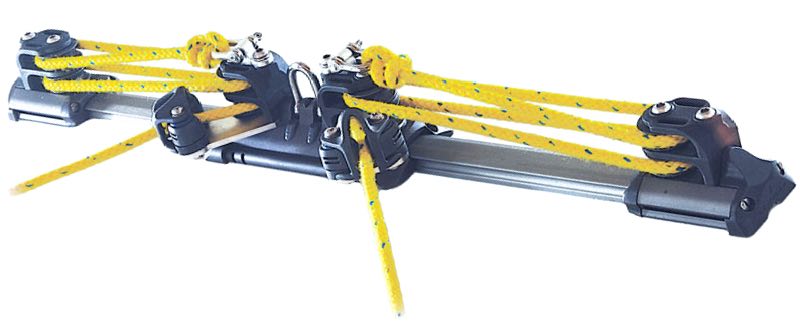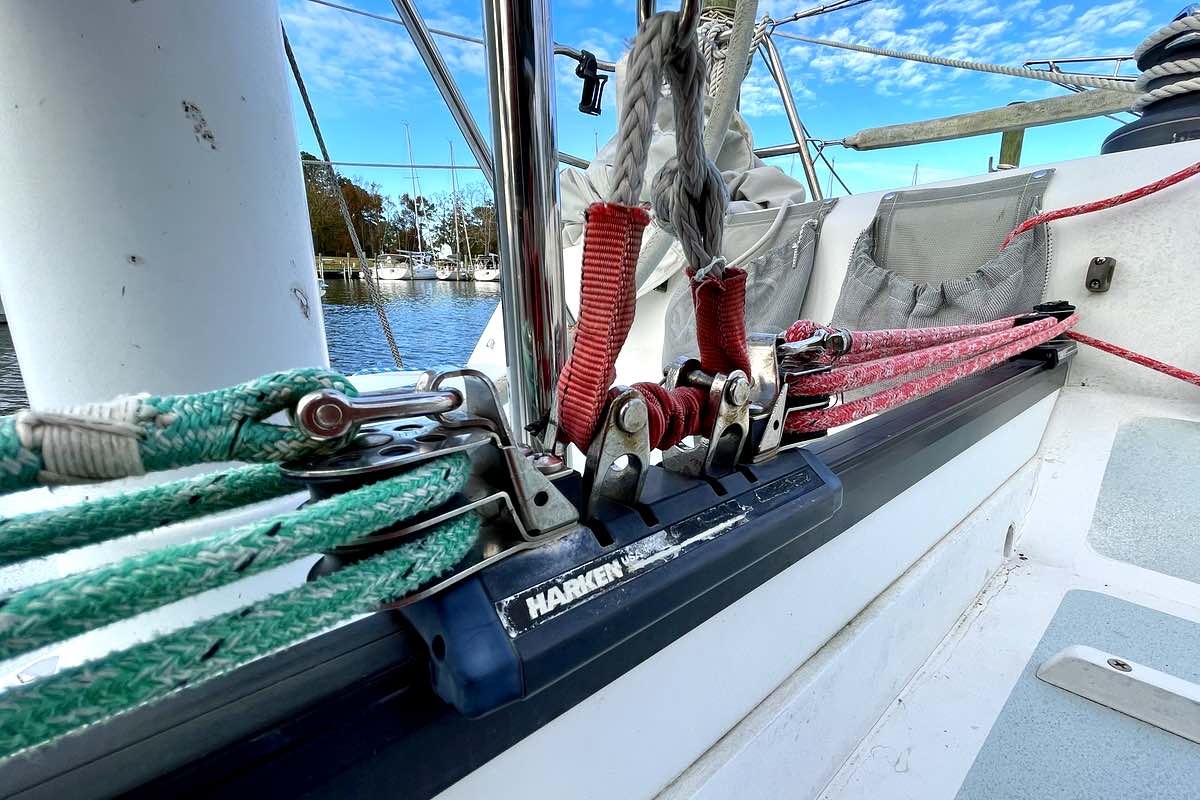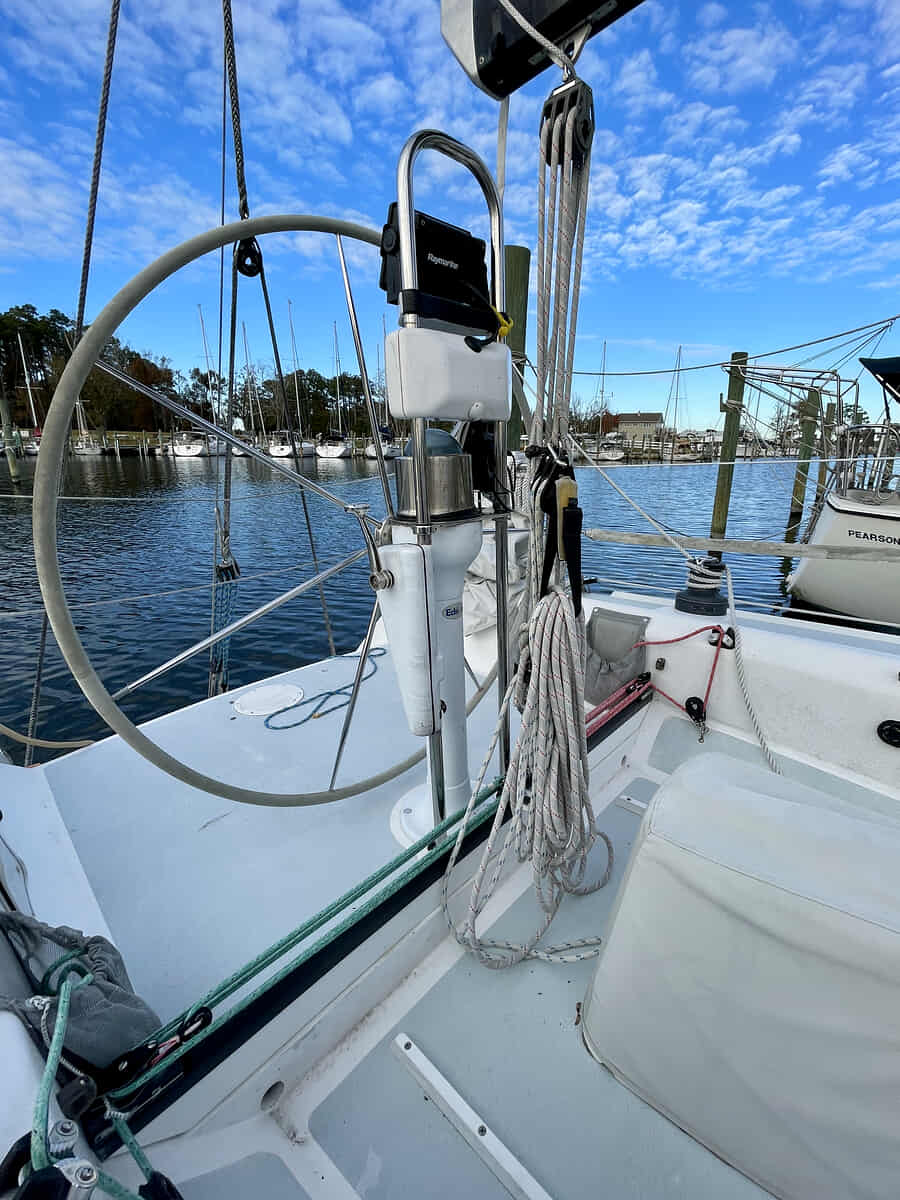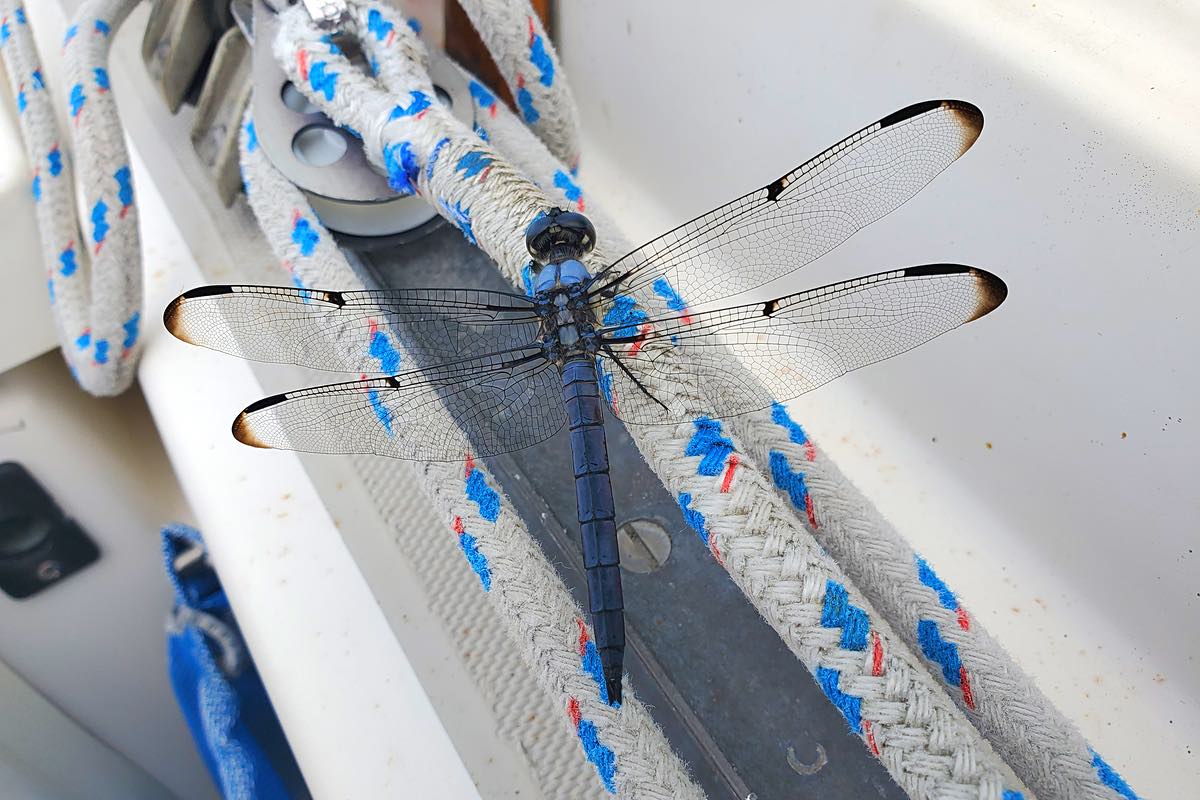It's Wednesday January 7, 2026
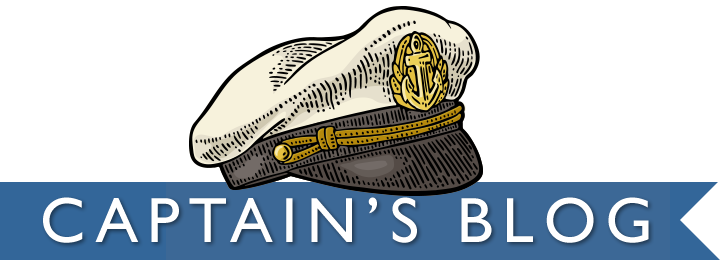
November 2022
My sailing, here in Oriental, allows me to make new friends and help people enjoy their boats. As a Captain and instructor, I am privileged to see a lot of different boats. Common among local boats is the never-used traveler. These travelers are frozen in place from lack of use. Traveler lines are stiff and the blocks will not turn freely; sad to see.So this month, I have once again picked up my lance to charge the windmills (Don Quixote, 1605, the first modern novel).
So beginnith my crusade for traveler usage.
Say what, where?The traveler is that mysterious device where the mainsheet attaches to the boat. Moving the traveler moves the mainsheet adjustment point. The traveler moves side-to-side; better said, windward or leeward.Here is a typical mainsheet traveler:
Do it right.Not using the traveler is not sailing the boat correctly. The best sailors use their travelers all the time. Travelers should be used almost as much as the main sheet.Really, yes.
Why is the traveler neglected?Simply put, the traveler is not used enough because sailors do not understand the benefits of the traveler. Some sailors do not know why it is important to integrate the traveler into sail trimming. So…
What it do, by Captain JohnThe traveler is the mechanism that balances the boat. It is a balancing tool. In the simplest terms the traveler dumps air out of the main and balances the main sail forces with the head sail forces.
Why is it important?The head sail wants to turn the bow downwind. The main sail wants to spin the boat into the wind. Sailboats pivot in the center.Most important is to balance the opposing forces of both sails. Failure to balance the two sails means the rudder must be turned to steer the boat straight.
Most common is being over powered with too much mainsail out on a windy day. Read on.
A traveler set up on a Cape Fear 38 – with different colored lines for port and starboard.Holding the boat downIf the helmsperson is sailing along with the wheel or tiller turned, the boat is not balanced. Necessary to keep the boat sailing straight, the rudder is dragging through the water.An unbalanced boat will require the helmsperson to apply muscle, keeping the wheel turned to downwind, thus preventing the boat from rounding up. “Too much helm” will slow the boat. Every boat’s best balance indicator is the wheel. Keep reading…
Slide the traveler downwindLowering the traveler downwind dumps air from the main. This will relieve the pressure the helmsperson feels on the wheel and allow the wheel to be centered.Now the rudder is centered and the boat speeds up. Nice.
With the boat balanced, and on a relatively calm day, the boat will sail along (straight) with very little input required from the helm. So, without changing the main sail shape, moving the traveler to leeward opens the sail and decreases heeling forces. Moving leeward also increases the driving force and shifts the center of effort forward. Really nice.
For the overachieversThose with their PhDs in sail trimming will not like my “traveler as a balancing tool” explanation.Most of these overachievers think about sail trim in terms of the trio: Angle of incidence, depth, and twist.
Experts apply the various sail controls to manipulate angle of incidence, depth and twist into the desired sail shape: top, middle and bottom. Really, the traveler shifts the extended chord line of the main sail and alters the angle at which the apparent wind enters the sail. (Chord is the shortest / straight line from the leach to the luff.) The angle at which the wind enters the sail is of angle of incidence. Angle of incidence is sometimes called angle of attack.
In aviation, angle of attack is the term used.
Down the rabbit holeThere are angle of attack gauges in aircraft. Angle of attack is critical in aircraft carrier landings because it sets the angle of the jet when it lands on the aircraft carrier deck.Proper angle means the jet will catch the cable with the tailhook. Too fast/low angle of attack means the jet will land flat with the tailhook too high and miss the cable. Too much angle of attack means the jet is slow, angled high and the tailhook will bounce on the deck and over the cable.
Anyway, back to sailing.
Traveler line locked in the traveler cleat. Excess line is kept in out of the way (and off the deck) when not in use.Traveling out of the rabbit holeSailing purists will use angle of incidence versus angle of attack.Either term is okay. Nobody at the Bean or Tiki Bar will correct you.
Anyway, this angle determines the total aerodynamic force on the boat. Moving the traveler upwind angles the sail away from the apparent wind, increases the angle of incidence, increases the total forces including side forces, and directs forces aft thus decreasing drag.
Easing the traveler aligns the mainsail with the wind, decreases angle of incidence, reduces total forces including side forces, directs forces forward and increases drag.
Is your brain gonna catch fire and melt?
The traveler will change the angle of incidence without altering the mainsail’s twist. I should write some words about the mainsheet then twist.
MainsheetTightening the mainsheet tensions the leech, decreases twist, increases mainsail fullness, moves draft aft, increases total force and side force, directs total force more aft, decreases drag angle and ultimately improves pointing.Sheet in the main to point. We know this.
Also, in big winds, boats with big mainsails often have trouble bearing away. In order to bear / pivot away, these boats must ease the mainsheet to move the total force forward.
Bonus: the mainsheet also tensions the jibstay by pulling aft on the mast tip. Easy right? I will not write about the mainsheet’s effect on the jib.
Disappointed?
Twist and shoutA few words about twist are required.Twist is the difference in the direction of the chords of the horizontal sections at different heights associated with a decreasing angle of incidence with height. Twist is controlled by the mainsheet (vang sheeting excepted). More twist means different angle of incidence up and down the leech. A straight leech means minimal twist.
A sail has lots of twist when the upper part of the sail is open. Adding twist is easing the mainsheet. Reduce twist by sheeting in. Twist control is leech tension control. And, twist determines the performance of the upper one-third of the sail.
Twisting a sail changes the angle of incidence/attack and therefore its power. Use more twist to de-power the sail, reduce heeling, reduce weather helm, and adjust for wind differences at the top of sail. The top of the sail will always twist off first because it is further from the boom.
Clear as mud? My point is we control mainsail twist with leech tension/mainsheet. The traveler provides much the same affects but does not change twist.
Proper twist has three indicators: the top batten is parallel to the boom, the leech ribbons are flying, and the telltales break evenly right before the sail luffs. (Now you know.)
The full traveler rig, port to starboard and up to the boom.Initial settingBunky (Towndock Editor term), going upwind? Set the traveler car so the boom is on the centerline of the boat.Some Bunkies pull the traveler all the way up to windward then adjust the mainsheet. Highest pointing occurs when drag is the lowest. The chord line of the main sail should be in line with the boat heading.
Traveling: light, medium, and heavyIn light wind move the traveler to windward. Adjust the mainsheet to keep the sail twisted. The upper most part of the sail should be open just a little.In a moderate breeze, keep the traveler car centered.
In heavy air, ease the traveler leeward as wind speed increases. Keep the boat on its feet. Bunkies, sailing upwind with the rail in the water is no way to go through life (Dean Wormer paraphrased, Faber College, Animal House, 1978, Greatest movie ever.)
Closing word about telltales and leech ribbonsYes. Please put them on your sails
The hopeSo, now that I’ve explained the what, why, and how, I am hoping local travelers will get more use. More speed and control produces more fun.I trust this month’s blog will get you thinking/started.
DisclaimerThree sailors on a boat produces five opinions. When I crewed aboard a J70 racing sailboat, the three of us never agreed on sail trim.Mostly, we agreed on nothing. (Another shoutout to Jim Flaherty and Jerry Dasson)
If a sail adjustment improves speed over ground, you have done well. However, if the boat slows, undo the adjustment.
Apathy must be left on the pier. Try hard.
Dragonfly traveling on the traveler.SourcesBill Gladstone’s Book “North U. Trim” is a good read. First written in 1983, it has been revised six times. They have got it right.Of course Stuart Walker’s “Manual of Sail Trim” 1985 is still considered The Bible. However, like The Bible, it is a difficult read.
“The Physics of Sailing” by John Kimball is a less difficult read.
And of course, for sailors like me, there is YouTube and the Internet. Some of the internet stuff is good, some is trash. Beware. And…
The endAbove all have fun; “it’s a recreational activity.”Make your boat go faster and improve control. Learning more about sail trim will allow you to get the most enjoyment from your boat.
Read or watch; then try.
Fair Winds,
Captain John Rahm
Third Wave Sailing
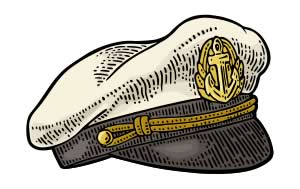 Captain's Blog on TownDock.net is all about making your time on the water enjoyable. Captain John Rahm teaches sailing and boat handling at Third Wave Sailing. Captain's Blog on TownDock.net is all about making your time on the water enjoyable. Captain John Rahm teaches sailing and boat handling at Third Wave Sailing. |
